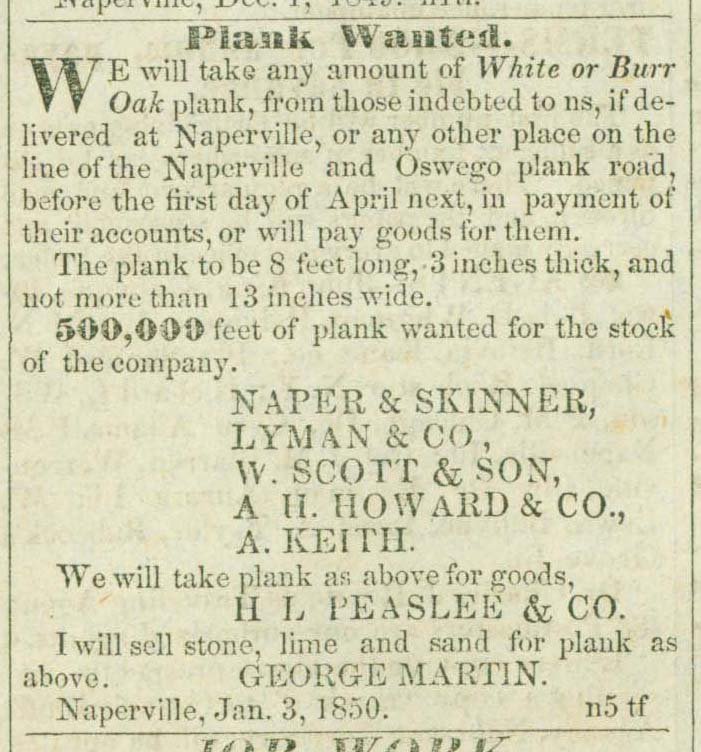
In the middle of the nineteenth century, a network of plank roads spread throughout the country, connecting agricultural towns to urban markets. Naper & Skinner, Lyman & Company, W. Scott & Son, A.H. Howard & Company, A. Keith, H.L. Peaslee & and Company, and George Martin formed a stock company in Naperville to finance the plank road. It was built in 1850 to transport goods safely. The plank road seemed a perfect solution to the problem of mud holes that lined the road between Naperville and Chicago. A half million feet of plank was delivered and laid down on stringers and bedded in the earth. Naperville was overflowing in a sea of farmers. They brought herds of family and carried grain all the way from the plains to Chicago. The plank road turned Naperville into the busiest town in Illinois. Constant clamor and commotion filled the air as a string of livestock stood tail to nose, like a great pulley belt with one end in Chicago and the other end in Naperville. It moved back and forth along the plank road, the only good road into the city. Naperville was a hustling bustling place, the merriest in Illinois with their plank road and Pre-Emption House. But the boom did not last; the bottom was about to fall out. The railroad was catching on, but the town leaders refused to let the Northwestern railroad lay tracks through Naperville. Even Robert Naper, Joseph Naper’s son, thought that the railroad was “one of the wildest and most foolish schemes that ever was seriously entertained by an intelligent person.” So the railroad went to Wheaton. Naperville was happy, but not for long. The plank road fought the mud for one whole season, but the mud won. Planks began to rot, warp, break and in no time the mud holes were more treacherous than the dirt road the planks had replaced. Discouraged farmers began rolling their wheat into Chicago on the newly built railroad though Wheaton. James Hunt (one of the stock holders) recounted, “We killed ourselves by refusing to admit the railroad…. She sunk from the busiest and merriest town in Illinois to the pokiest and deadest…. And all because we couldn’t see the difference between a plank and a rail.” The stockholders closed the plank road and disposed of the planks. Naperville became a deserted island. But in time Naperville recognized her mistake and saw that the railroad was the wave of the future. Although it took a while and wasn’t easy, Naperville pulled herself up by the bootstraps. By 1864, she was back on her feet with a newly built railway system and once again, goods moved back and forth through Naperville.